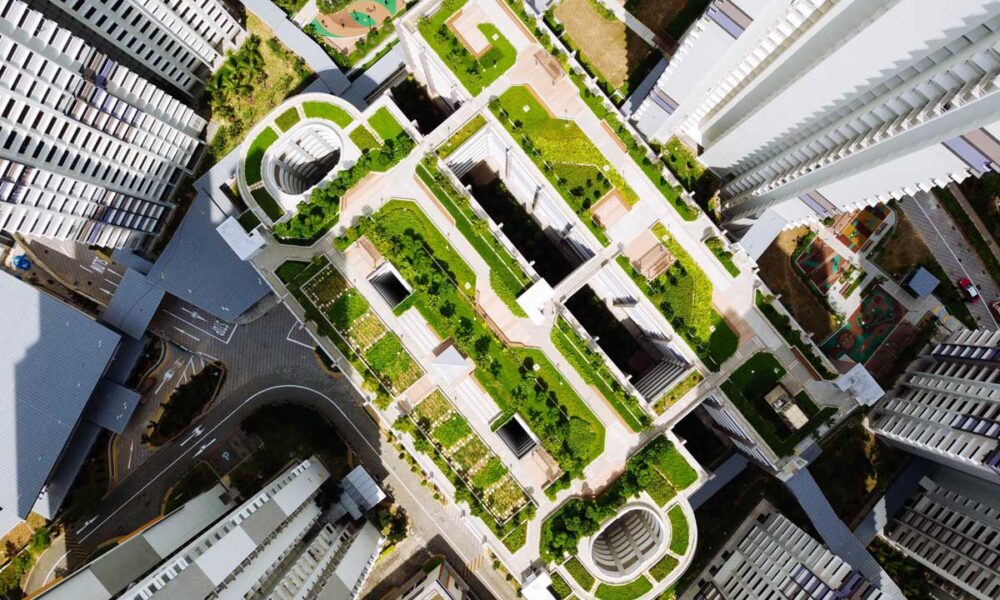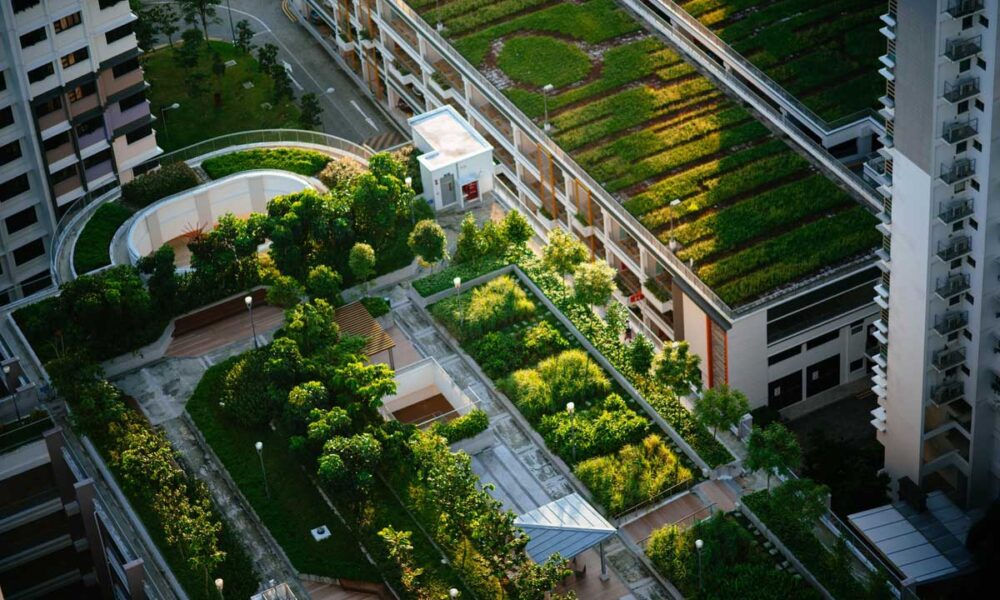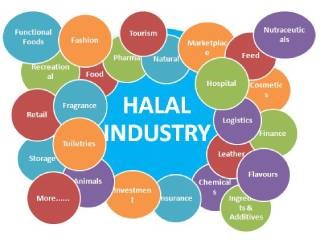UNCATEGORIZED
New archaeology dives into the mysterious demise of the Neanderthals
Published
2 years agoon
By
Editor
The Cyber era which found its genesis with the advent of the global internet- through the US Department of Defense funding ARPANET experimentations in the late 1960s[1] – embodies the liberal spirit of laissez-faire and the freedom of expression and has grown rapidly from about 3 billion internet users in 2018,[2] to over 5,385,798,406 internet users, – or 67.9% of our total population – as of June 30, 2022.[3] Attempts, however, have been made to curtail users ability to access what is on the internet through the development of national intranets- examples being China’s great firewall,[4] Russia’s sovereign internet,[5] Iran’s National Information Network,[6] and North Korea’s Kwangmyong network.[7] What these national intranets have in common is centralised management in terms of websites and social media that are accessible, and information that is available to the citizens. Each of these states has the ability to distort truth, to rewrite the narrative, and to determine what is fact and force-feed it to their citizens by filtering opposing content and through restricting/blocking access to alternatives. ‘Centralisation’ here refers to concentrated power in the hands of one group, that allows for unilateral decisions to be made on behalf of the entire population or network.
The threat of centralisation also persists within the private sphere/realm, with tech companies having found themselves at the centre of a new debate in the press media. While tech companies focusing on social media may have first formulated/established themselves as outlets for expression of their user base they have now been taking strides in the opposite direction by censoring user posts and content. Recent instance include Pinterest which in 2019 began blocking any and all search results concerning vaccinations.[8] Similarly, Facebook in 2020 began deleting ‘events’ that aimed at organising protests against home quarantine during the start of the COVID pandemic.[9] Twitter in 2021 extricated over 70,000 accounts that were linked with the ‘QAnon’ conspiracy that threatened public order.[10] This was part of Twitter’s policy of removing posts and deleting accounts that broke their platform’s rules. While in each of these instances the concerned tech company may have arguably acted with good intention, their ability to simply flick a switch and unanimously censor content is deeply troubling. The control that social media companies exerted even over influential people culminated with the permanent suspension of U.S ex-President Donald Trump’s Twitter handle.[11] This incident is exemplary when it comes to determining the power of web censorship that is imbued within the hands of social media companies.
How can DLTs help counteract centrality?
‘Distributed Ledger Technologies’ (DLTs) can be used to counter the growing threat of centralisation from both state actors and monolithic tech-companies. There are various kinds of DLTs- such as Directed Acyclic Graphs (DAG), Holochain, Block Lattice, and the most renowned of all being- Blockchains.[12] Quintessentially, DLTs are distributed peer-to-peer networks that utilise a majority consensus for transactions to be verified and then stored as data on a public ledger. For simplicity sake this article will utilise blockchains to illustrate how DLT networks function.
‘Nodes’ are individual peers within a Blockchain network that maintain a record of the ledger thereby being involved in the process of storing, verifying, and distributing the full set of data with other participant nodes on the blockchain.[13] This “ledger of records” is immutable- allowing for data, events, and transactions to be time-stamped on chain, thus creating a verifiable log of all network user’s micro-history. The key features of a DLT are that they are ‘immutable’, ‘trustless’, and ‘verifiable’ with transactions being easily accessible/viewable by anyone in the entire network and it is these qualities that become instrumental when countering centralisation.
Take for instance the ostracisation of some Iranian national banks in 2012 and Russian national banks in 2022 from the ‘Society for Worldwide Interbank Financial Telecommunications’ (SWIFT)- an international banking system which executes international financial transactions.[14] These instances demonstrate the current weaknesses/drawbacks of our existing financial system- as failure to comply with international norms has resulted in the enforcement of ‘one-sided’ economic sanctions. This cuts off these Banks’ and thereby the nation’s access to the global market as most exchanges occur using SWIFT via the U.S. Dollar and has the secondary effect of debilitating the economic strength of the local currency. Cryptocurrencies, however, are not restricted by these same limitations and were thereby used as a hedge by citizens both in Ukraine and in Russia to save the value of their savings by transferring them from fiat currencies into digital cryptocurrencies.[15] DLTs moreover are resistant to external influence as the transactions (here referring to both financial transactions and any information that is ingrained on-chain) occurring on them are ‘immutable’, which means that once the network/chain is set up- the data time-stamped onto the ledger can no longer be tampered with by third-parties and will continue to exist on-chain permanently. Similarly, attempts made to restrict transactions to -and- between users from a particular region will prove ineffectual as no single entity has control over the entire network.
A second advantage/strength of DLTs is that the ‘consensus mechanism’- the process through which nodes coordinate to add transactions to the network- is designed in such a way so as to allow for the entire process to be ‘trustless’. The immutability of the DLT grants participants on the network the ability to engage in transactions with one-another without having to trust one-another or rely on a third intermediary such as banks or centralised tech platforms to execute the transaction. Moreover, these financial transfer are instant- a real life example being witnessed during the 2022 Russian invasion of Ukraine where individual netizens across the world were able to make direct donations totalling $42 million in 6 days to the Ukrainian Government after they posted their verified wallet address/public key- circumventing the restrictions imposed through bureaucracy.[16] Furthermore it can be argued that the public nature of the digital ledger of transactions grants greater transparency to the public on how exactly the donated money was and can be spent. This is due to the fact all transactions made on-chain (the sending of cryptocurrency to the donated address and the spending of this donated amount on other things) become visible through inputting the public key address on tools such as BSCscan or Etherscan which display all existing transactions.[17] The astounding feature of this whole process is that this can be executed while granting anonymity to the donators- as the only way to identify which address belongs to whom is if the donator somehow revealed that the corresponding wallet belonged to them.
To summarise DLTs have a low barrier to entry as anyone with an internet connection and who is willing to invest time and energy into understanding how the crypto space/system works is able to utilise it. DLTs are designed to be resistant to censorship as every node is independent and the network therefore decentralised. Therefore, a good way to test the strength of a DLT is to measure/assess how easy it would be for a government, corporation, or any external third party (venture capitalist firms, hackers, hacktivists) to shut down or interfere with the network. To shut down or effectively change a decentralized network would require ownership or control of over half the nodes or systems. Even individual countries are incapable of exacting their influence on these independent networks. Algeria, Nepal, Northern Macedonia, and China have all passed laws that decreed the trading and purchase of cryptocurrencies and the utilisation of their underlying blockchains as illegal further blocking user access to websites where cryptocurrencies could be purchased or exchanged making user access difficult but not impossible.[18] Technologies such as Virtual Private Networks (VPNs) grant users the ability to circumvent censorship and allow citizens of even the most authoritarian regimes accessibility.[19] The immutable, anonymous, and decentralized (cross-border/international) nature of DLTs therefore make it very hard for countries to police and regulate crypto transactions. In fact, this was a point argued by Indian Finance Minister Nirmala Sitharaman who called for mutual cooperation and a common solution between countries to tackle the global dilemma posed by cryptocurrencies during a high-level panel discussion organised by the International Monetary Fund (IMF) in April, 2022.[20]
This makes it evident that for the first time in the history of humanity a series of systems are implemented that are capable of resisting State influence which has historically enjoyed its power unperturbed. What has made all of this possible is the invention of ‘smart contracts’, which is immutable computer code, existing on-chain, that allows for the terms and conditions of an agreement between two parties to be carried out without the intervention of a third-trusted party.[21] The contractual clause- such as the release of funds in the form of cryptocurrencies (Bitcoin, Ethereum, Monero etc.) is executed automatically when the necessary preconditions (the fulfilment of services) have been successfully met. Smart contracts allow for the development of decentralised applications and offer increased versatility.
How to discern a centralised DLT from a truly decentralised DLT
DLT networks attempt to adhere to the tenets of decentralisation, at least ideologically, however, the harsh reality is that many of them simply masquerade themselves as being decentralised while falling short of the benchmark. ‘Solana’ is a fine example of an open-source blockchain that despite utilising smart contracts, and supporting decentralised applications (‘dapps’) is still quite centralised. For consensus and for adding transactions to its blockchain Solana utilises a hybrid proof-of-stake model combined with what it has termed as ‘proof-of-history’- where ‘leader’ nodes are chosen randomly for validation for fixed periods of time- thereby lowering latency and increasing throughput.[22] While Solana currently has 1975 validator nodes running giving the illusion of decentralisation- just 32 nodes hold a third of the total staked supply of SOL (a.k.a cumulative stake) and thereby validate a third of all transactions![23] This is dangerous as this implies that 32 of the largest nodes could potentially collude to halt the network. Secondly, once a DLT is up and running outages should virtually be impossible provided the DLT is decentralised enough as no one can collude to temporarily shut off the network. Solana witnessed six outages during the month of January 2022 for periods lasting longer than 8 hours,[24] during which time they halted the entire chain to identify and fix the issues before restarting the chain- something indicative of the centralised nature of this network. Finally, according to a 2021 report by Messari over 48% of Solana’s token allocation at its genesis were allotted to venture capital firms with only a very small fraction going to the public through lock drops or pre-launch sales.[25] Any DLT having almost half of its initial token allocation allotted to VC firms cannot be said to adhere to the ideologies of decentralisation as only a sliver of the entire allocation was even purchasable/attainable by the public. It is for these reasons that Solana can be categorised as a fairly centralised blockchain.
Bitcoin- the original progenitor of all blockchains- currently having over 15000 reachable nodes active all throughout the world- serves as a prime example of a DLT that truly mirrors the ethos of decentralisation.[26] Bitcoin fulfils the core tenets of decentralization with its blockchain being immutable, trestles through by utilising ‘proof-of-work’ (PoW) for consensus, and transparent with all the transactions on its blockchain being verifiable through services such as BScscan.[27] Moreover, the initial coins were distributed through the mining of blocks- which could be carried out by anyone with a Graphic Processing Unit (GPU) available within Personal Computers- further implying/meaning that bitcoins were openly accessible/earn-able by the public. Furthermore, and in direct contrast to Solana, Bitcoin is leaderless and since its inception in 2008 has never experienced any outages. To enact any change or upgrade to the Bitcoin network requires over 51% of the nodes on the network to acquiesce. Some criticisms have arisen that make reference to the top 6 (centrally managed) mining pools that when combined amount to over 75% of the total computing power in Bitcoin- a fact which would allow them to validate or cancel transactions, conduct double-spending and create coins from thin air.[28] However, the cold-undisputed truth remains that Bitcoin has never, since its inception, witnessed any such collusion that has resulted in a 51% attack- therefore, for all intents and purposes, Bitcoin stands as the apotheosis of decentralisation.
Conclusion
The conveniences afforded through the proliferation of the internet have simultaneously given rise to increasing avenues of centralised control to both national governments and monolithic state companies. In fact, Twitter Founder Jack Dorsey himself has grown despondent at this centralised nature of the internet and recently announced plans to create a new decentralised platform to combat it- terming this as the new Web5.[29] However, this article has also made clear how DLTs and their underlying crypto assets provide a unique solution to countering the growing threat of centralisation. Truly decentralised networks cannot be stopped by the government through some obscure law because the only law in crypto is ‘immutable computer code.’ Neither can cryptocurrencies on these networks be confiscated as they are private assets truly owned by the individual key holder. Governments are aware that DLTs and cryptocurrencies are a frontier they do not exercise sovereignty over and are actively adopting stances to oppose them. Therefore, it can be said that the true test of a DLTs decentralised nature will be to observe how each of them respond to increasing censorship from state and tech influence. It is the author’s opinion and belief that DLTs will remain relevant and continue to grow undeterred because digital assets and their underlying technology are firmly located at the heart of the next technological revolution that is reshaping the world across societies and economies.
[1] Andrews, Evan. 2019. “Who Invented The Internet?”. HISTORY. https://www.history.com/news/who-invented-the-internet.
[2] Morgan, Steve. 2019. “Humans On The Internet Will Triple From 2015 To 2022 And Hit 6 Billion”. Cybercrime Magazine. https://cybersecurityventures.com/how-many-internet-users-will-the-world-have-in-2022-and-in-2030/.
[3] Internetworldstats. 2022. “World Internet Users Statistics And 2022 World Population Stats”. Internetworldstats.Com. https://www.internetworldstats.com/stats.htm.
[4] D’sa, Douglas Daniel. “How has China been using Artificial Intelligence (AI) to build a digital system of Social Control in East Turkistan (Xinjiang)?.” (2021).
[5] Epifanova, Alena. “Deciphering Russia’s “Sovereign internet law”: Tightening control and accelerating the Splinternet.” (2020): 10.
[6] Eyvazi, Mohammad Rahim, Safiye Rezaee, and Mohsen Mohammadi Khanghahi. “The role of the national information network in strengthening the independence and national security in the second step of the Islamic Revolution.” Islamic Revolution Research 10, no. 4 (2022): 29-55. (double check this one)
[7] Williams, Martyn. 2022. “A Peek Inside North Korea’s Intranet”. North Korea Tech – 노스코리아테크. https://www.northkoreatech.org/2015/07/06/a-peek-inside-north-koreas-intranet/.
[8] Telford, Taylor. 2019. “Pinterest Is Blocking Search Results About Vaccines To Protect Users From Misinformation”. The Washington Post. https://www.washingtonpost.com/business/2019/02/21/pinterest-is-blocking-all-vaccine-related-searches-all-or-nothing-approach-policing-health-misinformation/.
[9] Ghaffary, Shirin. 2020. “Facebook Is Taking Down Some, But Not All, Quarantine Protest Event Pages”. Vox. https://www.vox.com/recode/2020/4/20/21228224/facebook-coronavirus-covid-19-protests-taking-down-content-moderation-freedom-speech-debate.
[10] Conger, Kate. 2021. “Twitter, In Widening Crackdown, Removes Over 70,000 Qanon Accounts (Published 2021)”. Nytimes.Com. https://www.nytimes.com/2021/01/11/technology/twitter-removes-70000-qanon-accounts.html.
[11] Twitter. 2021. “Permanent Suspension Of @Realdonaldtrump”. Blog.Twitter.Com. https://blog.twitter.com/en_us/topics/company/2020/suspension.
[12] The Zenon Team. 2020. “Network Of Momentum- Leaderless BFT Dual Ledger Architecture”. https://github.com/zenon-network/zenon.network/releases/download/whitepaper/whitepaper.pdf.
[13] Florian, Martin, Sebastian Henningsen, Sophie Beaucamp, and Björn Scheuermann. “Erasing data from blockchain nodes.” In 2019 IEEE European Symposium on Security and Privacy Workshops (EuroS&PW), pp. 367-376. IEEE, 2019.
[14] Tulun, Teoman Ertuğrul. “SWIFT System Turns Into Economic Sanctions Instrument.” (2022).
[15] Lau, Yvonne. 2022. “They Fled Russia With Little Cash. Here’S How Cryptocurrency Saved Them”. Fortune. https://fortune.com/2022/03/30/russia-ukraine-war-cryptocurrency-sanctions-capital-controls-refugees-cash-oligarchs/.
[16] Taku, Nitasha, and Jeremy Merrill. 2022. “Ukraine Asked For Donations In Crypto. Then Things Got Weird.”. Washington Post. https://www.washingtonpost.com/technology/2022/03/03/ukraine-cryptocurrency-donations/.
[17] Cernera, Federico, Massimo La Morgia, Alessandro Mei, and Francesco Sassi. “Token Spammers, Rug Pulls, and SniperBots: An Analysis of the Ecosystem of Tokens in Ethereum and the Binance Smart Chain (BNB).” arXiv preprint arXiv:2206.08202 (2022).
[18] Orji, Chloe. 2022. “Bitcoin Ban: These Are The Countries Where Crypto Is Restricted Or Illegal”. Euronews. https://www.euronews.com/next/2022/04/27/bitcoin-ban-these-are-the-countries-where-crypto-is-restricted-or-illegal2.
[19] Varvello, Matteo, Inigo Querejeta Azurmendi, Antonio Nappa, Panagiotis Papadopoulos, Goncalo Pestana, and Benjamin Livshits. “VPN-Zero: A Privacy-Preserving Decentralized Virtual Private Network.” In 2021 IFIP Networking Conference (IFIP Networking), pp. 1-6. IEEE, 2021.
[20] PTI. 2022. “Cryptocurrency Could Be Used For Money Laundering And Terror Funding, Says Indian Finance Minister”. Business Insider. https://www.businessinsider.in/cryptocurrency/indian-finance-minister-says-that-cryptocurrency-could-be-used-for-money-laundering-and-terror-funding/articleshow/90933116.cms.
[21] Zheng, Zibin, Shaoan Xie, Hong-Ning Dai, Weili Chen, Xiangping Chen, Jian Weng, and Muhammad Imran. “An overview on smart contracts: Challenges, advances and platforms.” Future Generation Computer Systems 105 (2020): 475-491.
[22] Yakovenko, Anatoly. 2017. “Solana: A New Architecture For A High Performance Blockchain V0.8.13”. Solana.Com. https://solana.com/solana-whitepaper.pdf.
[23] Beach, Solana. 2022. “Dashboard | Solana Beach”. Solanabeach.Io. https://solanabeach.io/validators. Accessed on 6th September, 2022.
[24] Nicolle, Emily, and Bloomberg. 2022. “Solana’S Sixth Outage This Month—And Founder’S ‘Lol’ Tweet—Frustrates Traders”. Fortune. https://fortune.com/2022/01/25/solana-founder-anatoly-yakovenko-crypto-crash-blockchain-instability/.
[25] Watkins, Ryan. 2022. “Power And Wealth In Cryptoeconomies”. Messari.Io. https://messari.io/report/power-and-wealth-in-cryptoeconomies.
[26] Bitnodes. 2022. “Bitnodes”. Bitnodes.Io. https://bitnodes.io/. Accessed on 12th September, 2022
[27] Cernera, Federico, Massimo La Morgia, Alessandro Mei, and Francesco Sassi. “Token Spammers, Rug Pulls, and SniperBots: An Analysis of the Ecosystem of Tokens in Ethereum and the Binance Smart Chain (BNB).” arXiv preprint arXiv:2206.08202 (2022).
[28] Gervais, Arthur, Ghassan O. Karame, Vedran Capkun, and Srdjan Capkun. “Is bitcoin a decentralized currency?.” IEEE security & privacy 12, no. 3 (2014): 54-60.
[29] Ramage, Jack. 2022. “Move Over Web3. Former Twitter CEO Jack Dorsey Wants To Launch Web5 Based On Bitcoin”. Euronews. https://www.euronews.com/next/2022/06/15/move-over-web3-former-twitter-ceo-jack-dorsey-wants-to-launch-web5-based-on-bitcoin.
Related
You may like
-


WEF and UN-Habitat Join Forces to Unlock Critical Investment in Cities through Public-Private Collaboration
-


5 ways countries can adapt to the climate crisis
-


The Development of Artificial Intelligence in China: Conclusions
-


Four ways the planetary crisis is impacting mental health
-


New European Bauhaus under Cohesion Policy: €50 million call for innovative projects in cities
-


The Development of Artificial Intelligence in China: Investment and attention to production
UNCATEGORIZED
7 Trends Reshaping a USD 3.9 Trillion Global Halal Industry
Published
4 months agoon
January 2, 2024By
Editor
The Global Halal Market (GHM) is not just growing, it’s exploding. Driven by a surging Muslim population, rising disposable incomes, and shifting consumer preferences, this behemoth is projected to reach a staggering USD 3.9 trillion by 2027. But what’s driving this explosive growth? Buckle up, because 2024 promises a thrilling ride fueled by cutting-edge technology, ethical consumerism, and personalized convenience. Here’s your deep dive into the 7 hottest trends reshaping the global halal landscape:
Halal Tech Revolution: Where Silicon Valley Meets Mecca
Forget clunky processes and opaque sourcing. The halal industry is getting a tech makeover, and it’s about time. Blockchain is ensuring ethical sourcing and transparent supply chains, from farm to fork. Imagine halal meat traced back to its free-range roots, with every step documented on a tamper-proof digital ledger. Artificial intelligence is optimizing slaughterhouses, automating processes, and ensuring humane treatment of animals. Halal e-commerce platforms are booming, bringing convenience and halal-certified products to Muslim consumers worldwide. Think Amazon, but with prayer apps, virtual tours of halal farms, and even halal-compliant fintech solutions – the future of halal is digital and delicious!
Ethical Halal: Beyond Compliance, Embracing Values
Muslim consumers are no longer satisfied with just a halal label. They crave sustainability, animal welfare, and organic goodness. Expect a surge in plant-based halal options, from juicy burgers to creamy milkshakes made with innovative pea protein and lentil blends. Ethically sourced meat, raised on antibiotic-free feed and roaming in spacious pastures, will be the new gold standard. And get ready for a beauty revolution: cruelty-free cosmetics and hygiene products that adhere to Islamic principles will pamper consumers with peace of mind.
Convenience is King: Busy Lives, Halal Solutions
In today’s fast-paced world, convenience reigns supreme. The halal industry is taking note, with solutions tailor-made for busy Muslim lives. Subscription meal kits will deliver pre-portioned, halal-certified ingredients straight to doorsteps, complete with recipe cards for stress-free meal prep. Halal food delivery apps will take the guesswork out of dining out, connecting users with a curated selection of restaurants and cafes offering delicious and compliant meals. And for those special occasions, on-demand halal catering will ensure stress-free gatherings, leaving hosts free to enjoy the festivities.
Beyond Food: The Halal Universe Expands
The halal industry is shedding its “food-only” label and branching out into exciting new frontiers. Halal travel is booming, with destinations vying for Muslim tourists by offering halal amenities, prayer spaces, and culturally sensitive experiences. Imagine exploring Marrakech’s vibrant souks or unwinding on a pristine Maldives beach, all while knowing your needs are catered to. Halal cosmetics are gaining traction, with innovative brands formulating products free of alcohol, animal derivatives, and harsh chemicals. And even the pharmaceutical industry is taking notice, developing halal-compliant medications and healthcare products that align with Islamic principles.
Science & Innovation: Reimagining Halal with Cutting-Edge Tech
Research labs are not just churning out papers; they’re cooking up a futuristic halal feast. Lab-grown halal meat is no longer science fiction, with companies like Eat Just and Aleph Farms creating meat indistinguishable from its conventional counterpart, but without the ethical and environmental concerns. Plant-based alternatives are evolving beyond bland tofu, with innovative textures and flavors mimicking everything from juicy steaks to succulent lamb shanks. Get ready for halal food reimagined with cutting-edge technology, offering delicious and sustainable options for the future.
Health & Wellness: Halal Goes Holistic
Muslim consumers are prioritizing their well-being like never before. Enter functional halal foods infused with ingredients like probiotics, antioxidants, and adaptogens, designed to nourish the body and mind. Sports nutrition is another burgeoning market, with protein powders and energy bars formulated specifically for Muslim athletes seeking halal-compliant performance boosters. And for those managing chronic conditions, dietary supplements tailored to diabetes management, weight loss, or heart health will offer halal solutions for holistic well-being.
Storytelling & Branding: Building Trust, Shaping Perceptions
In a crowded marketplace, differentiating your brand is key. The halal industry is catching on, embracing compelling narratives and values-driven branding. Showcase your commitment to ethical sourcing, sustainability, and community engagement. Share inspiring stories of the farmers who raise your halal meat, the scientists developing innovative food technologies, or the communities you empower through your business practices. By building trust and aligning with consumer values, halal brands can stand out.
Embrace the Halal Revolution:2024 is not just a year on the calendar; it’s the dawn of a new era for the halal industry. By harnessing the power of technology, embracing ethical values, and catering to evolving consumer needs, halal businesses can tap into a USD 3.9 trillion market brimming with potential. So, whether you’re a food producer, travel blogger, or tech whiz, join the halal revolution. Optimize your offerings, tell your story, and connect with Muslim consumers worldwide. The future of halal is bright, and the time to act is now.
HALAL ECONOMY
Beyond Andalusia: Exploring Spain’s Islamic Heritage through Halal Tourism
Published
4 months agoon
December 24, 2023By
Editor
Spain’s evolving landscape of Muslim-friendly tourism is a testament to its rich Islamic history and its commitment to embracing diverse cultural needs. As we head into 2023, projections indicate a staggering 85 million international visitors to Spain, a 16.4% increase from the previous year, highlighting the country’s growing appeal as a global tourist destination. A significant portion of these tourists are from Muslim-majority countries, drawn to Spain’s Islamic heritage and the burgeoning availability of Halal services and tailored cultural experiences.
The Rise of Halal Tourism in Spain
Spain’s shift towards accommodating Muslim tourists is evident in the increasing number of Halal-certified establishments and services. The Spanish Halal Institute has reported a surge in businesses seeking Halal certification, a rise from 100 in 2010 to over 500 in recent years. This growth is not only a response to the rising Muslim visitor numbers but also a strategic move by Spanish businesses to tap into the lucrative Muslim market.
Muslim-friendly Services Across Spain
Beyond the traditionally popular Andalucía, other regions in Spain are adapting to the needs of Muslim tourists. Cities like Barcelona, Toledo, and Madrid now offer a range of Halal dining options, prayer facilities, and culturally sensitive services. For instance, the Mandarin Oriental in Barcelona, a Halal-certified hotel, offers amenities tailored to Muslim guests, including prayer mats and Halal food options. Similarly, the Costa del Sol Hotel in Torremolinos has trained its staff in Muslim culture and traditions, enhancing the experience for its Muslim clientele.
Cultural and Historical Tourism
Spain’s Islamic history, particularly the legacy of Al-Andalus, is a major draw for Muslim visitors. Educational initiatives like walking tours in Toledo, led by Aicha Fernández, and Madrid’s Muslim and Arab heritage tours, organized by Rafael Martínez, provide insights into Spain’s rich Islamic past. These tours are not just tourist attractions but educational experiences, offering deep dives into the historical and cultural significance of Spain’s Islamic era.
Economic Impact and Market Potential
The economic potential of Muslim-friendly tourism in Spain is immense. According to a report by the State of the Islamic Economy (2022), the global Muslim population, a significant portion of which belongs to the rising middle class, is increasingly travel-savvy and demands tailored services. This presents a lucrative opportunity for Spanish businesses in the tourism sector.
Government Initiatives and Recognition
The Spanish government’s role in promoting Muslim-friendly tourism is pivotal. Efforts like the creation of Halal tourism guides by municipalities like Málaga, which won recognition at the Halal In Travel Global Summit in Singapore, underscore the national commitment to positioning Spain as a Muslim-friendly destination.
Challenges and Opportunities
Despite the progress, challenges remain. Celia Rodríguez, a Spanish revert, notes the scarcity of Halal options in some regions and the need for better-informed services for Muslim tourists. This gap presents an opportunity for businesses to further tailor their offerings and improve communication with Muslim clients.
Global Context and Future Prospects
Globally, the trend towards Muslim-friendly tourism is gaining momentum, with countries like South Korea and Japan also emerging as popular destinations. Spain’s strategic approach to embracing and catering to the needs of Muslim tourists not only enhances its competitive edge in the global tourism market but also promotes cultural understanding and inclusivity.
UNCATEGORIZED
TB Research Shows a Good Diet can cut Infections by Nearly 50%
Published
8 months agoon
August 28, 2023By
Editor
| Tuberculosis is the single most deadly infectious killer of humankind. It claimed 1.6 million lives in 2021 alone. As the search for effective ways to fight the disease continues, the findings of new research offer hope: a good diet can cut infections by nearly 50%. Yogan Pillay and Madhukar Pai write that nutrition is a vaccine in all but name. |
For centuries, we have known that tuberculosis is a social disease. It thrives on poverty and social factors such as malnutrition, poor housing, overcrowding, unsafe work environments and stigma. Globally in 2021 an estimated 2.2 million cases of TB were attributable to undernourishment, 0.86 million to HIV infection, 0.74 million to alcohol use disorders, 0.69 million to smoking and 0.37 million to diabetes.
But knowledge about social determinants alone does not always translate into tangible action and progress. A new trial in India, called RATIONS, aimed to determine the effect of nutritional supplementation on new cases of tuberculosis in households of adults with pulmonary TB. The research found that providing food baskets to people with TB and their households could go a long way to prevent and mitigate the disease.
No easy silver bullets
The TB community has typically looked for biomedical solutions, or “silver bullets”, for a social pathology, and we are struggling to make progress. Since the COVID pandemic, TB mortality and incidence have increased globally, putting TB back on top as the single most deadly infectious killer of humankind. In 2021, 1.6 million people died of TB. In Africa, TB incidence is high (212 per 100,000 population) with a high case fatality rate because of the HIV epidemic.
Undernutrition is the most important cause of TB. This has been shown in studies in many countries, including South Africa, where researchers found poor levels of nutrition in patients admitted to a specialized TB hospital. Malnutrition refers to all forms of deficiencies in nutrition, including over-nutrition and obesity. Undernutrition refers more specifically to a deficiency of nutrients. While we know that many patients with TB have poor nutrition, the latest evidence is that undernutrition also plays a key role in TB within households.
The results of the Reducing Activation of Tuberculosis by Improvement of Nutritional Status (RATIONS) trial show that improved nutrition in family members of patients with lung TB reduced all forms of TB by nearly 40%, and infectious TB by nearly 50%.
This trial recruited 10,345 household members of 2,800 patients with lung TB.
- All TB patients received a monthly 10kg food basket (rice, pulses, milk powder, oil) and multivitamins for six months.
- In one group family members received 5kg rice and 1.5kg pulses per person per month, while the other group of family members did not get food baskets.
Food worked like a vaccine in this trial, cutting the risk of household members developing TB. Nutrition could also protect against other conditions such as anaemia, diarrhoea and respiratory infections, but these were not not the main focus of the trial. An accompanying paper, based on the results of the RATIONS trial, showed that severe undernutrition was present in nearly half of all patients.
An early weight gain in the first two months was associated with 60% lower risk of TB mortality. The other benefits were higher treatment success and better weight gain. During the six-month follow-up period, a remarkable treatment success rate of 94% was achieved.
Getting food to patients
How expensive was the intervention? The cost of a food basket was US$13 per TB patient per month and US$4 per household member per month and could be delivered, even in rural areas, using field staff. Even before the RATIONS trial, the Indian government had recognised the need for nutrition support for people with TB, and in 2018 launched “Nikshay Poshan Yojana”, a direct benefit transfer scheme. Under this scheme, each TB patient receives a financial incentive of US$6 per month for the duration of the anti-TB treatment (typically, six months for people with drug-sensitive TB).
Emerging data suggests that while the scheme improves the treatment completion rates among patients with TB in India, they often receive their payments late. There is a need to improve the efficiency and provide timely payments.
The new RATIONS trial suggests that directly providing food baskets may be another effective strategy.
Many countries, including India, have other social security programmes, including public distribution systems to provide food grains at subsidised prices. Using existing channels to provide extra food rations to people with TB, and expanding the menu to include proteins such as pulses and millets, is a strategy worth exploring. This could also have positive effects on other diseases such as diabetes.
Implications for South Africa
South Africa is one of the countries labelled by the World Health Organization as a “high TB burden country”.
What does this latest research mean for South Africa? Statistics South Africa reported that in 2021 2.6 million people had inadequate access to food and a further 1.1 million stated they had “severe” inadequate access to food. More than 683,000 children five years and younger experienced hunger.
This toxic mix requires prevention of TB by nutritional support, drugs to prevent TB infections and early diagnosis with molecular tests and treatment.
With high levels of food insecurity and undernutrition in South Africa, fuelled by the highest levels of inequality, it is critical that South Africa includes social benefits for people with TB and those in their households to reduce the prevalence of TB in the country and to meet the Sustainable Development Goals for 2030.
Regardless of how social benefits are distributed, action must be based on evidence. We need better tests, cures and vaccines for TB, but they alone cannot end the epidemic. TB patients must be provided with the social benefits that they need and deserve, as a basic human right.
Courtesy: The Conversation

Senegal’s New President: Bassirou Diomaye Faye

Ending the Humanitarian Crisis: A Call to End the Genocide in Gaza
Tinubu’s Dying Presidency
Topics
- AGRIBUSINESS & AGRICULTURE
- BUSINESS & ECONOMY
- DIGITAL ECONOMY & TECHNOLOGY
- EDITORIAL
- ENERGY
- EVENTS & ANNOUNCEMENTS
- HALAL ECONOMY
- HEALTH & EDUCATION
- IN CASE YOU MISSED IT
- INTERNATIONAL POLITICS
- ISLAMIC FINANCE & CAPITAL MARKETS
- KNOWLEDGE CENTRE, CULTURE & INTERVIEWS
- OBITUARY
- OPINION
- PROFILE
- PUBLICATIONS
- SPECIAL FEATURES/ECONOMIC FOOTPRINTS
- SPECIAL REPORTS
- SUSTAINABILITY & CLIMATE CHANGE
- THIS WEEK'S TOP STORIES
- TRENDING
- UNCATEGORIZED
- UNITED NATIONS SDGS
Trending
-

 TRENDING11 months ago
TRENDING11 months agoAFRIEF Congratulates New Zamfara State Governor
-

 PROFILE8 months ago
PROFILE8 months agoA Salutary Tribute to General Ibrahim Badamasi Babangida: Architect of Islamic Finance in Nigeria
-

 BUSINESS & ECONOMY3 years ago
BUSINESS & ECONOMY3 years agoClimate Policy In Indonesia: An Unending Progress For The Future Generation
-

 BUSINESS & ECONOMY3 years ago
BUSINESS & ECONOMY3 years agoThe Climate Crisis is Now ‘Code Red’: We Can’t Afford to Wait Any Longer
-

 BUSINESS & ECONOMY3 years ago
BUSINESS & ECONOMY3 years agoIPCC report: ‘Code red’ for human driven global heating
-

 HALAL ECONOMY9 months ago
HALAL ECONOMY9 months agoRevolutionizing Halal Education Through Technology
-

 BUSINESS & ECONOMY3 years ago
BUSINESS & ECONOMY3 years agoThe Black sea protection initiative: What should we remember?
-

 BUSINESS & ECONOMY2 years ago
BUSINESS & ECONOMY2 years agoDistributed Infrastructure: A Solution to Africa’s Urbanization

